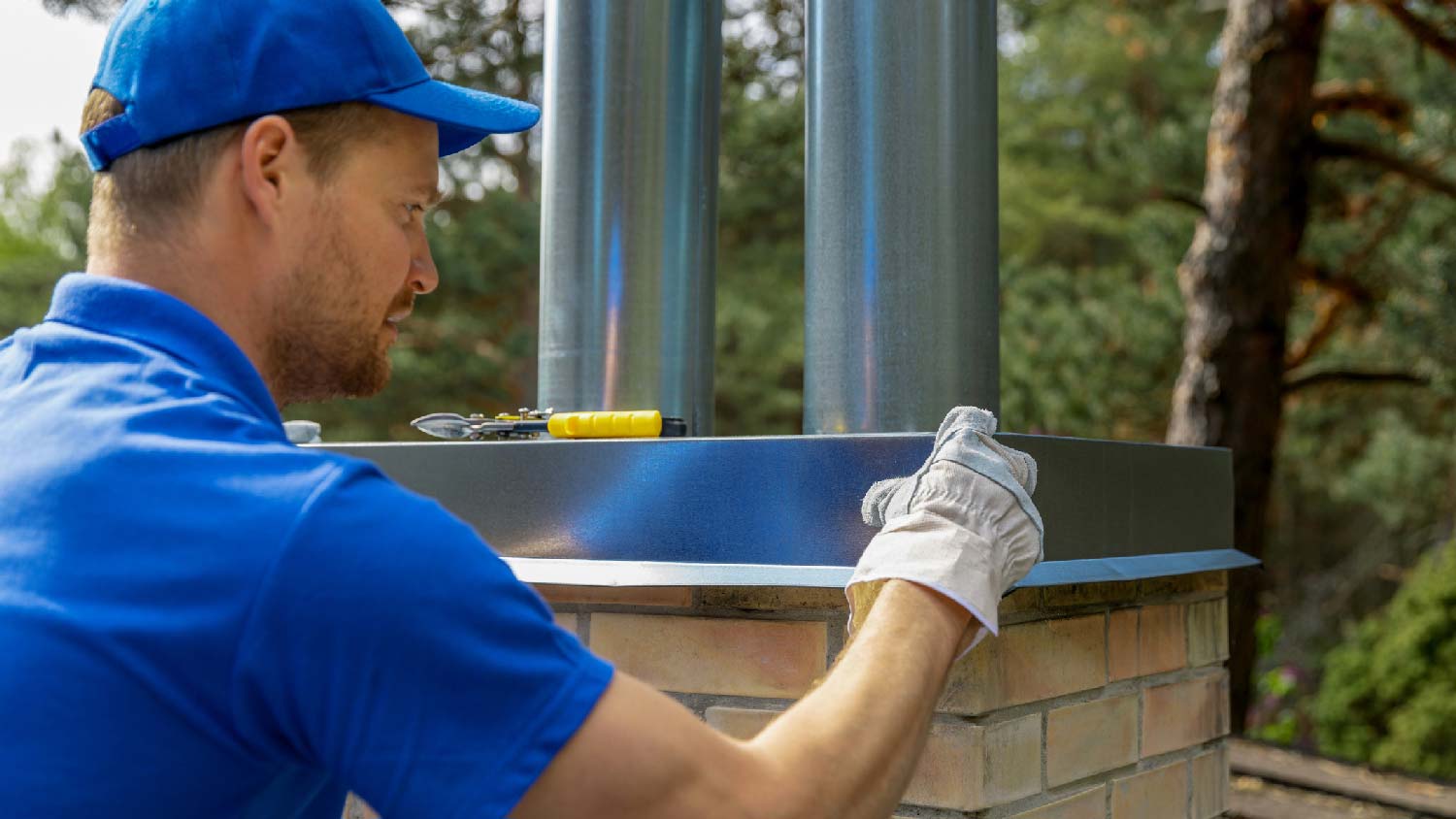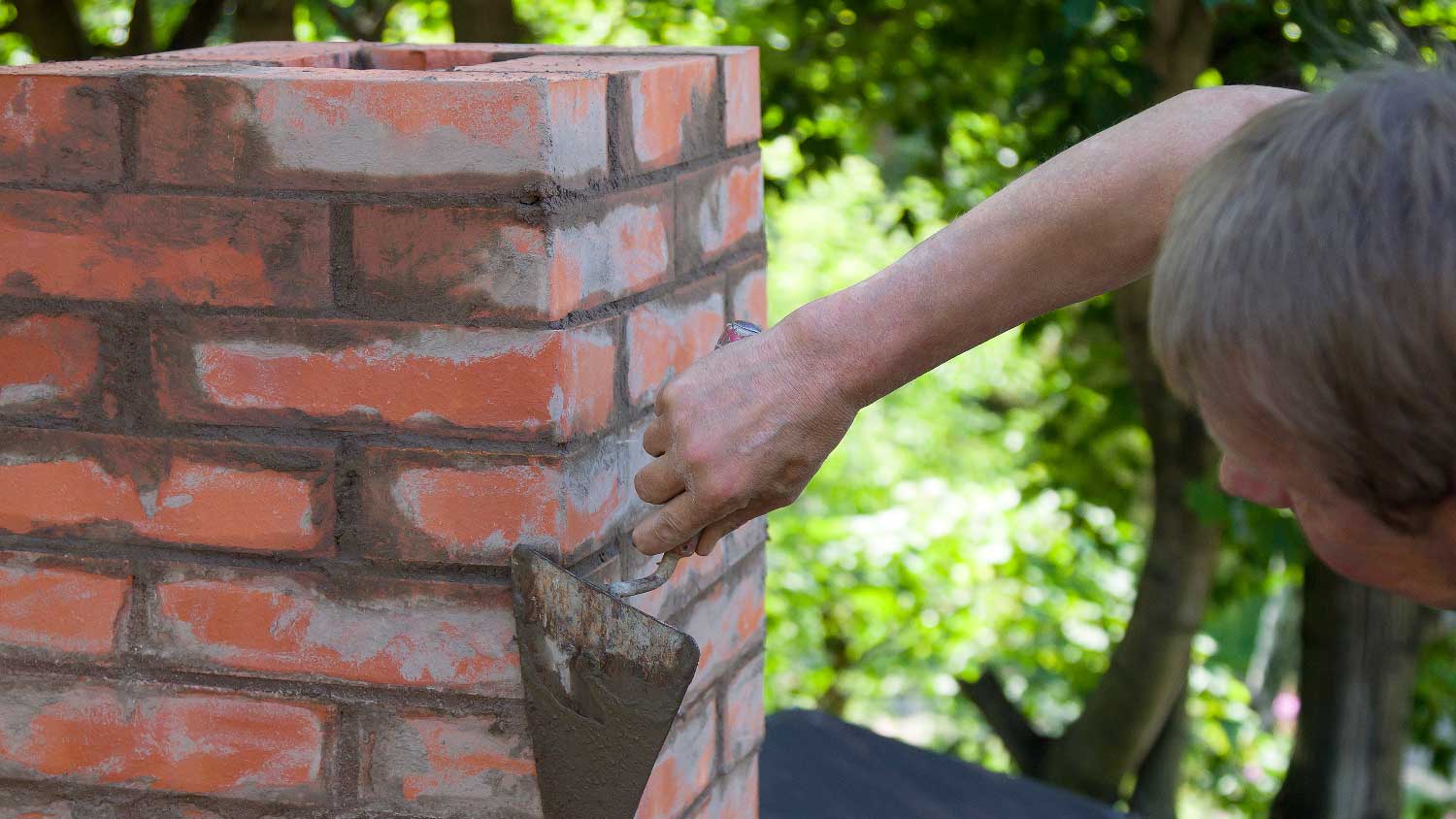
Replacing your chimney increases home value and prevents hazardous structural damage. Learn how much to budget for chimney replacement costs.
Here’s one more thing to put on your to-do list


All chimney flues—including metal chimney flues—need cleaning at least once a year.
Not cleaning your chimney regularly can lead to creosote buildup and fire hazards.
While you can clean your chimney yourself, it’s not a job for a beginner DIYer—instead, call a pro.
Cleaning your chimney might be one of those household tasks you only think about when watching Mary Poppins, but it’s incredibly important for the efficiency of your chimney and the safety of your home. A dirty chimney can lead to a host of problems and increase the risk of a chimney fire. So, the short answer is yes, metal chimney flues need cleaning. Let’s get into the dirty details.

When you think of a chimney, you probably envision a class red brick chimney. However, chimneys can be made from a variety of materials. In addition to red brick, you can find industrial concrete and modern metal chimneys, among a few other options.
But even if you have a traditional brick chimney, you can still line the inside (a.k.a. the flue) with metal. Metal chimney flues are a popular option because they’re durable, flexible, and rust-resistant. If you have a metal chimney flue, you may think it doesn’t require cleaning like brick chimneys do—after all, there is no porous material to crumble away. But all chimneys need regular cleaning to keep them working safely, regardless of the material.
Not maintaining your chimney can lead to many dangerous problems. Here are some of the risks of not cleaning a chimney flue:
Creosote buildup: Creosote is a residue from burning wood. Initially, creosote deposits are small, flaky pieces of soot that can be easily brushed away. But over time, soot combines with moisture to form a sticky, tar-like substance that’s harder to remove. It’s also toxic and flammable, and when a creosote fire starts in a chimney, it can set off a dangerous chain of events.
Blockages: Debris such as leaves, sticks, and even animal nests can find their way into your chimney and create blockages. Remember, your fireplace or wood-burning stove depends on your chimney to function efficiently, and obstructions mean air can’t flow properly.
Carbon monoxide: Blockages can cause dangerous gases like carbon monoxide to build up and leak into your home. Carbon monoxide gas is odorless so it can be difficult to detect (another reason to always make sure your smoke and carbon monoxide detectors are working.) Symptoms of carbon monoxide poisoning include headaches, nausea, dizziness, confusion, vomiting, shortness of breath, fatigue, and loss of consciousness.

Cleaning a chimney is no small task. It requires special tools that not every homeowner has on hand. It can also be dangerous—you may be dealing with flammable materials while up on your roof. When in doubt, leave it to a professional. If you’re set on going at it alone, here are some general steps to follow.
First, you’ll need a few supplies:
Drop cloths, tarps, or plastic sheeting
Protective gear (old clothes, dust mask, gloves, goggles)
Flashlight
Chimney brush that will fit your flue
Extension rod for the brush
Small brush and dustpan
Shop vac
Ladder tall enough to reach your roof safely
Prep the area
Make sure the chimney and fireplace or stove are completely cool. Then, protect yourself and the area around your fireplace from soot. Wear a dust mask and goggles, and lay down a drop cloth or tarp around the fireplace. Move any fireplace accessories, logs, or ash out of the way. Open or detach the damper.
Examine the chimney
Use the flashlight and carefully look inside the firebox and chimney. If there’s just a fine layer of soot, you may clean it yourself if you feel comfortable doing so. But if there’s a layer of creosote more than ⅛-inch thick, that’s a safety hazard. The Chimney Safety Institute of America (CSIA) recommends getting a professional cleaning.
Access the chimney from the top
If you’re okay with proceeding, then remove the chimney cap from the top of the chimney.
Brush the flue from the top or bottom
Attach the extension rod to the chimney brush and feed in either down from the top or up from the fireplace. Note that cleaning from the bottom is safer, but it will create a bigger mess as soot falls down the chimney. Scrub up and down to remove the soot from the flue. Use your flashlight to check.
Clean up
Clean around the top of the chimney and the fireplace. Sweep up the debris from the fireplace and surrounding area. Carefully fold and remove the drop cloths. Use a shop vac to suck up any remaining soot and ash, as the tiny particles can clog up standard vacuums. Be sure to reattach the chimney cap as well.
If you’re at all uncomfortable with any of these steps—whether it’s working on the roof, maneuvering a chimney brush, or buying special equipment—call a local chimney professional.
If your chimney needs anything other than a light clean, you should always rely on a pro instead of DIYing. Creosote that’s more than ⅛-inch thick can be dangerous to handle yourself. It’s also best to call a chiminey specialist if the chimney itself or the surrounding area looks damaged or unstable. They can first perform an inspection and assess if any repairs are needed along with a cleaning.
The National Fire Protection Association (NFPA) says that chimneys, fireplaces, and vents should be inspected and cleaned every year before being used. Your chimney might need cleaning more often, though, depending on how much you use it. The CSIA recommends chimneys be cleaned before there’s a ⅛-inch accumulation of soot and creosote, as that’s enough to cause a chimney fire that could damage your home.
From average costs to expert advice, get all the answers you need to get your job done.

Replacing your chimney increases home value and prevents hazardous structural damage. Learn how much to budget for chimney replacement costs.

Discover the average chimney tuckpointing cost, key price factors, and expert tips to help you budget and save on your next chimney repair project.

Chimney repair costs can vary by the type of chimney you have and the required repairs. Use this guide to help you estimate project costs.

Water coming from around your chimney can be a sign of a serious problem. Learn how to fix a leaking chimney so you can stay on top of the issue.

Stay on top of your chimney safety and maintenance with our chimney inspection checklist featuring expert tips on how to work with an inspector near you.

Your home’s chimney is made up of several parts. But when it comes to the difference between a chimney damper versus a flue, these parts work together.